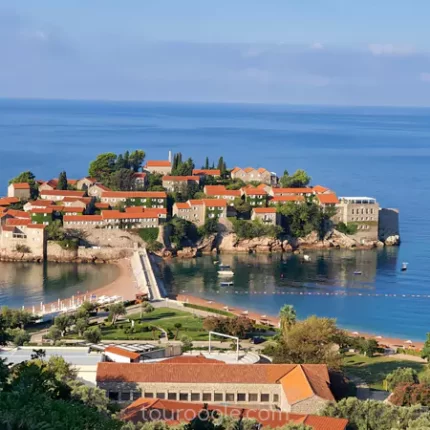

Montenegro (also known as Crna Gora) is a relatively small country in the Balkans, in the southeastern regions of Europe. It is primarily a mountainous country with high peaks and rough terrain. The name means “black mountain,” referring to Mount Lovćen.
Podgorica, the capital city of Montenegro, is home to approximately a third of the country’s population, making it the largest city in the country.
With a total population of about 620,000, it’s no surprise that most of the population still settles in rural areas and old towns packed with stony buildings and tight alleys. Although the country has a rich history of conflicts, it recently gained independence in 2006.
From the heights of the mountain ranges in the north to the depth of the Gulf of Kotor in the Adriatic Sea and the plains and valleys in between, Montenegro has a varied geography. Numerous caves, rivers, and lakes dot the landscape as well. All of these create a breathtaking scene straight out of a movie! If these descriptions tickle your fancy, here’s a list of the best natural attractions in the country. Have a look:
There are multiple historical and religious monuments across Montenegro, like monasteries, churches, and cathedrals filled with religious artworks. The country’s coasts are filled with medieval structures significant for their old Venetian architecture. Here are some of the best examples:
Montenegro neighbors Albania from the south, Serbia and Kosovo from the east, and Bosnia and Herzegovina from the north.
It has a small, shared border with Croatia in the west too. The Adriatic Sea borders the country on the west, and Lake Skadar, the largest lake in Southern Europe, lies on its shared border with Albania.
Due to its history and geographical location, Montenegro is a diverse country with influences from Christian Orthodoxy, the Byzantine and Ottoman Empire, and Slavic culture.
The vast majority of Montenegrins are religious, and most are members of the Serbian Orthodox Church. Muslims and Catholics also exist but are minorities.
Montenegrins are predominantly conservative and traditional. They value mutual respect, morality, and bravery. However, they have a relaxed attitude towards life. Some people go as far as to stereotype them as lazy.
The country even hosts the World Lazy Olympics! We don’t know how much truth there is to the stereotype, so judge for yourselves.
The official language of the country is Montenegrin. But the language of Montenegro and its neighboring countries in the Balkans are very similar to the point of mutual intelligibility between the people of these countries (Serbian, Croatian, Bosnian, and Albanian).
The traditional cuisine of Montenegro is unique due to its location. It is a mixture of Mediterranean and European flavors, usually featuring a wide variety of meat and fish. But if there is one food that sums up the Montenegrin tradition, it’s “Njegusi Prosciutto.” This national delicacy is a kind of pork sausage that originates from Cetinje Village in Mount Lovćen. Dried and cured meat makes up a large portion of the nation’s diet.